A Walk from St David’s

A Walk from St David’s in Pembrokeshire.

This week we offer you our first guided walk. The story was written last Easter, but ended up being usurped by events and saved for now.
Anyway, back to our guided walk. Not surprisingly, it is one of Bobby’s favourites. All you need is to get to St David’s. 269 miles from Dorking. A holiday, in other words, in beautiful Pembrokeshire. The walk starting in Britain’s smallest city. All you need for directions is detailed below. The walk is about 10 miles, following the Pembrokeshire Coastal Path. In short, walk to the sea from St David’s, turn right with the sea on the left. Walk to Whitesands Bay. And then back. The walk is “moderate” in effort. No dangerous sections. A few modest up-hills. No stiles. Refreshments in St David’s, or at Whitesands Bay.
The instructions follow as offered by “Visit Pembrokeshire”. If you would like to follow the links and find out more about this lovely area, you will need to call up the Visit Pembrokeshire website.


We suggest you to take an Ordnance Survey Explorer map with you. Although it is impossible to get lost, it may well be useful for you to know exactly where you are. The walk is circular and as such there are short cuts back if you get tired or run out of time.
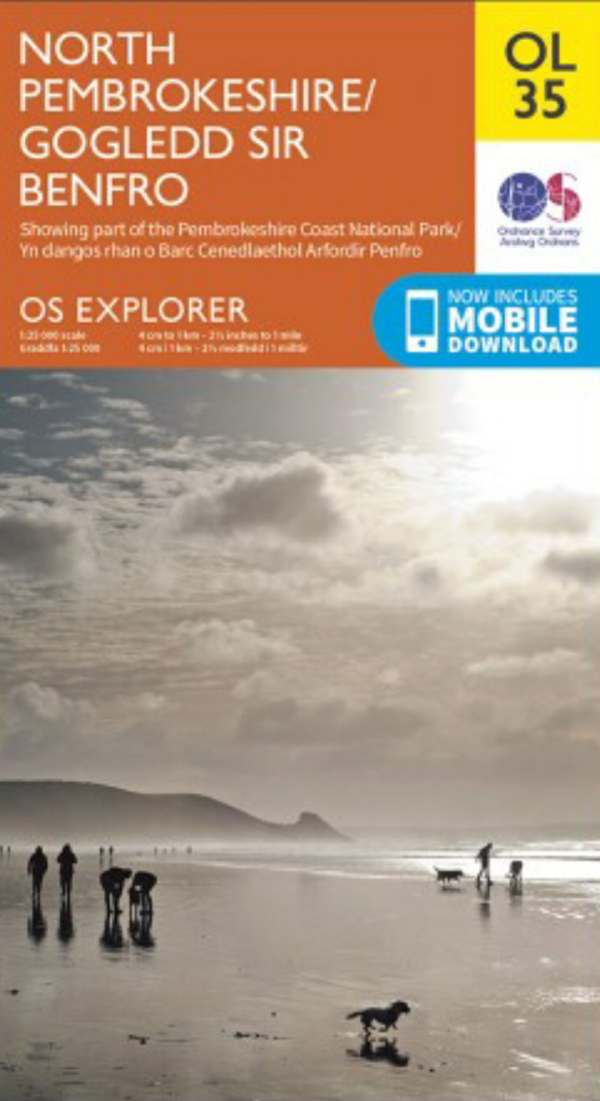
OL 35, OS Explorer covers the whole walk and beyond.
There are also opportunities at St Justinian’s or Whitesands Bay to catch a Coast Bus back to St David’s. Services are regular, reliable and will stop anywhere if waved down.

The “Strumble Shuttle”.
This is not by any means a dangerous walk, but you must stick to the path and keep away from the cliff edge. The National Park maintains the path and, on occasions, has taken small diversions inland where erosion has taken the cliffs too close to the path. It is Britain’s only Coastal National Park and you could walk 186 miles from start to finish. It is, of course, completely open to the weather and proper walking footwear and waterproof coats are advised.
For more information try: www.pembrokeshirecoast.wales/default.asp?PID=87
Walking the Walk
Last Easter, we walked the walk. Following the wettest winter in recent memory the path was very wet and muddy. Really hard going. By the time Bobby reached Whitesands Bay, he rested in the very accessible café for a while and watched the surfers. With screaming calf muscles, he took the easy option and the bus back to St David’s. The next day, the sun came out and he drove to St Non’s chapel and read a book all day in a sheltered nook with a magnificent view.
A pictorial record of those two days between Caerfai and Whitesands Bay follows:

St Non’s chapel, close to the Pembrokeshire Coast path.

A seat outside the chapel.
What is this life if, full of care,
We have no time to stand and stare.
No time to stand beneath the boughs
And stare as long as sheep or cows.
No time to see, when woods we pass,
Where squirrels hide their nuts in grass.
No time to see, in broad daylight,
Streams full of stars, like skies at night.
No time to turn at Beauty’s glance,
And watch her feet, how they can dance.
No time to wait till her mouth can
Enrich that smile her eyes began.
A poor life this if, full of care,
We have no time to stand and stare.
By Wm. Henry Davies.
(Wm. Henry Davies (1871-1940) is considered as the poet of the tramps. Born at Newport, Wales in the UK, Davies came to America from Great Britain and lived the life of a vagabond. One day, as the result of jumping a train, he lost one of his legs. Davies returned to England, where he continued to live the life of a tramp and a pedlar. He wrote poetry (presumably he did right along) and, eventually, he decided to print his own book and did so with the little money he earned panhandling. A copy of this first work, A Soul’s Destroyer, came into the hands of George Bernard Shaw; which, in turn, led to the popularization of the poet.)
(taken from: www.blupete.com/Literature/Poetry/Leisure.htm)

The view from the chapel on a grey day.

Porth Clais, looking east.

Walking poles are very handy. Skomer Island, across St Brides Bay.
Tough Welsh mountain ponies live on the cliff tops:
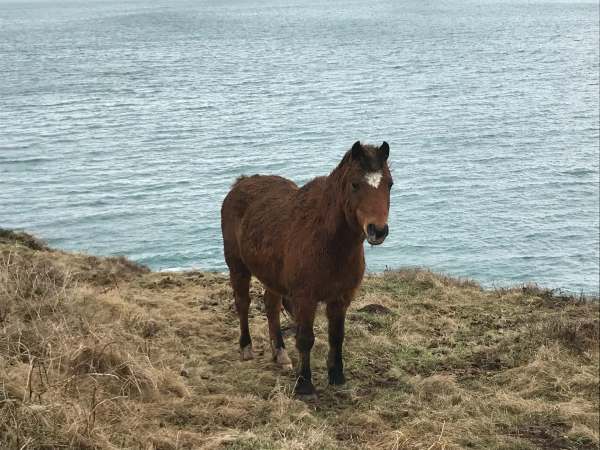



And sheep.

From April onwards the path becomes a maritime garden. At its best in May and June.

Grey forbidding clouds towards Skomer.

Turning north alongside Ramsay Island.

Ramsay Sound. Island left.

Footpath diversion to avoid cliff erosion.

New and old St Justinian’s lifeboat stations.

Looking across St Justinian’s inlet to the peninsula.
The new, grey, multi-million pound one needed to accommodate the new lifeboat which was too big for the old one. Very impressive.
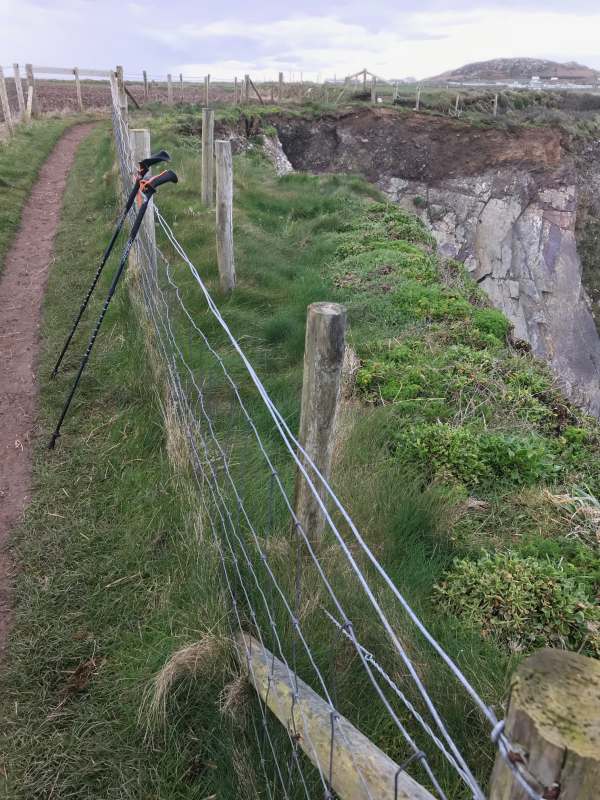
An older path diversion, where the original has disappeared into the sea.

Looking towards Whitesands Bay. The big hill is Carn Llidi (Been on top of that with Diddley, 2001).

Lots of wildlife. Sadly this Golden Plover had succumbed, probably, to the cold.
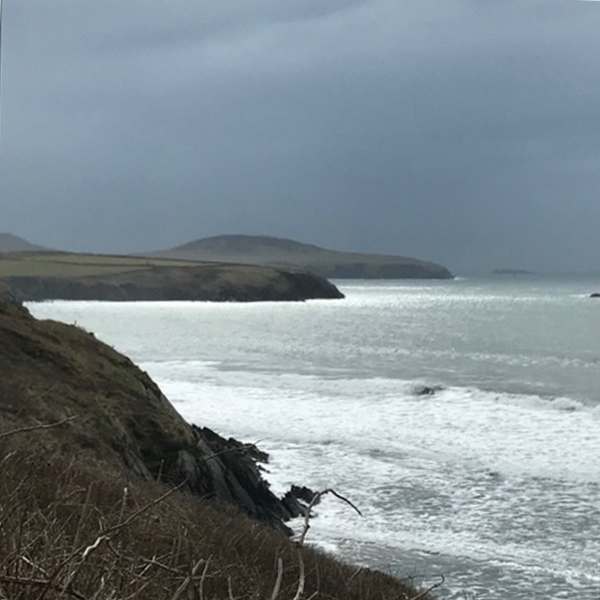
Rain coming. Ramsay Island furthest land. Near Whitesands.

The rain came, so this is beautiful Whitesands Bay the next day.

In the car park of Whitesands Bay. An American war memorial. Apologies for poor quality of the inscription picture.
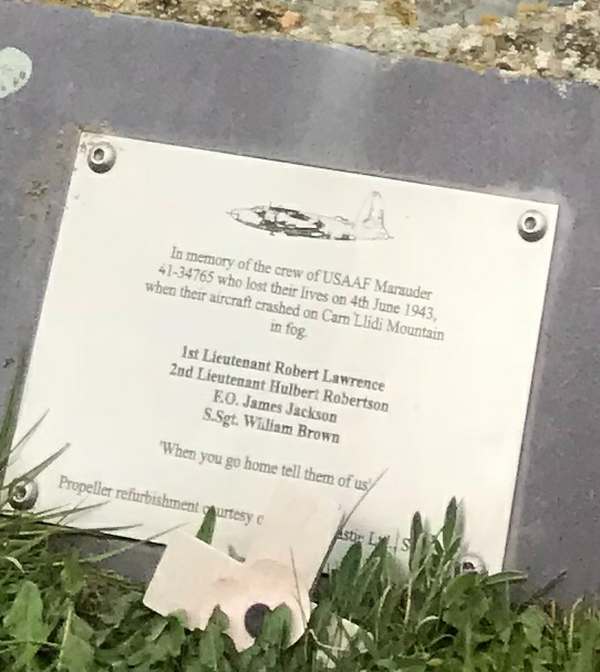
Crashed on the tall mountain Carn Llidi. 1943.
The next day the sun came out and he read a book all day in the sunshine sheltered from the wind at St Non’s Chapel.

Sunny morning St Non’s.

From the chapel, looking across to Skomer Island.

Nice place to read a book.
Lighting a Candle to Diddley
In St Non’s Chapel.
She loved this little chapel and often lit candles to her own mother Sarah.
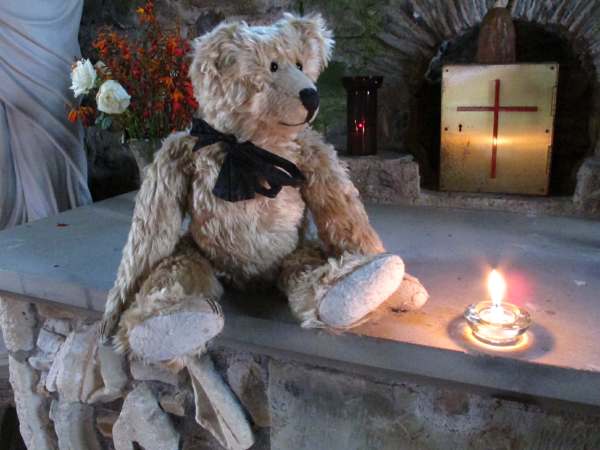

– – – – – – – – – – –







A truly beautiful part of the world! I first went to Pembrokeshire in October c1969/70 on a geology field trip, staying in Dale Fort. Little did I know then that I would later live in that lovely county for several years – why did I ever move? That’s another story… Now I live in Crawley – what a contrast! We bought our first property in the village of Tavernspite and we called our bungalow “Bro Dawel” – we had a Welsh slate engraving of the name by our front door and it was still there when we went back a couple of years ago. “Bro Dawel” means quiet place, and it really was. So different to the south east rat race.